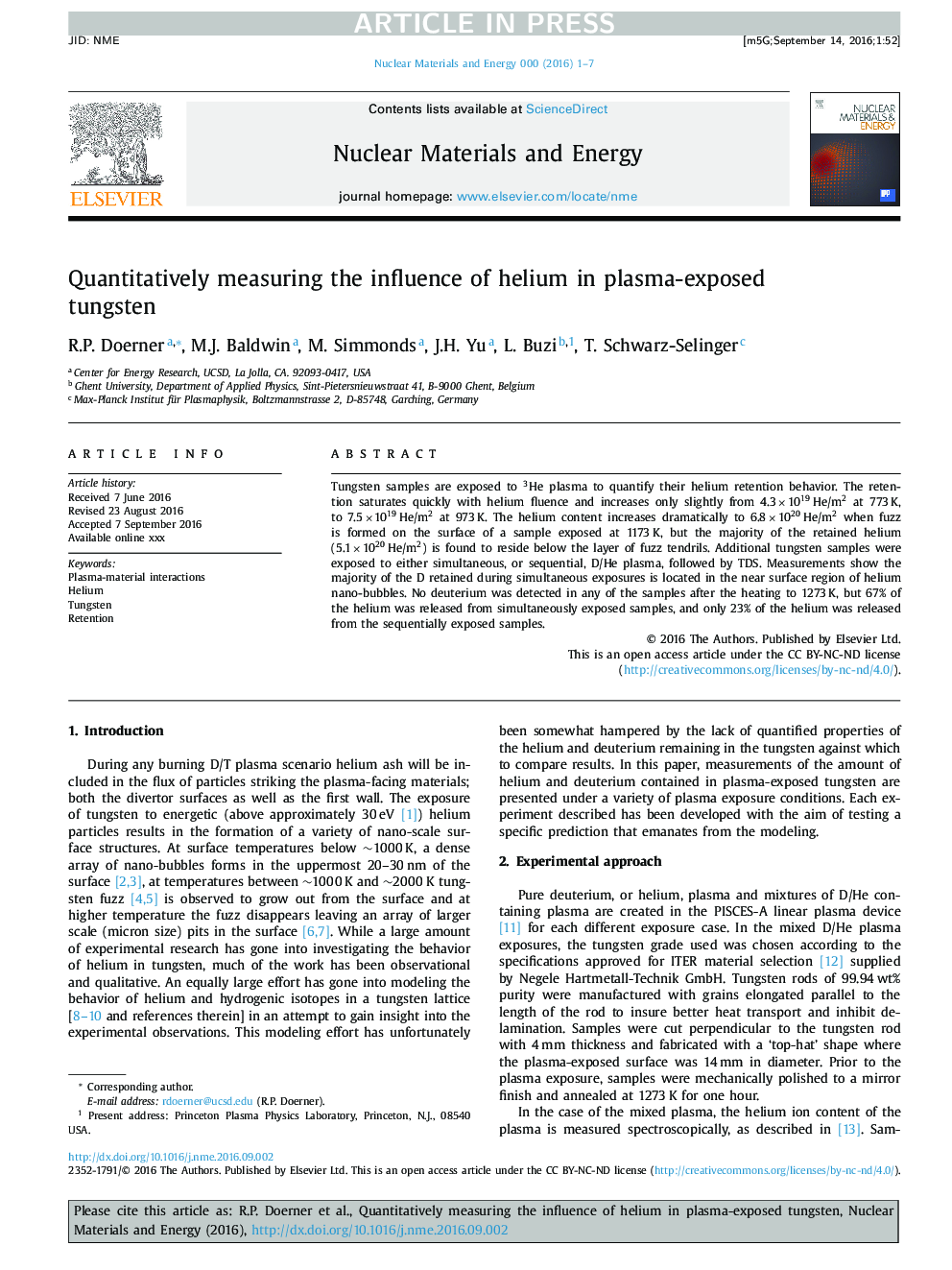| Article ID | Journal | Published Year | Pages | File Type |
|---|---|---|---|---|
| 7987493 | Nuclear Materials and Energy | 2017 | 7 Pages |
Abstract
Tungsten samples are exposed to 3He plasma to quantify their helium retention behavior. The retention saturates quickly with helium fluence and increases only slightly from 4.3Â ÃÂ 1019Â He/m2 at 773Â K, to 7.5Â ÃÂ 1019Â He/m2 at 973Â K. The helium content increases dramatically to 6.8Â ÃÂ 1020Â He/m2 when fuzz is formed on the surface of a sample exposed at 1173Â K, but the majority of the retained helium (5.1Â ÃÂ 1020Â He/m2) is found to reside below the layer of fuzz tendrils. Additional tungsten samples were exposed to either simultaneous, or sequential, D/He plasma, followed by TDS. Measurements show the majority of the D retained during simultaneous exposures is located in the near surface region of helium nano-bubbles. No deuterium was detected in any of the samples after the heating to 1273Â K, but 67% of the helium was released from simultaneously exposed samples, and only 23% of the helium was released from the sequentially exposed samples.
Related Topics
Physical Sciences and Engineering
Energy
Nuclear Energy and Engineering
Authors
R.P. Doerner, M.J. Baldwin, M. Simmonds, J.H. Yu, L. Buzi, T. Schwarz-Selinger,
